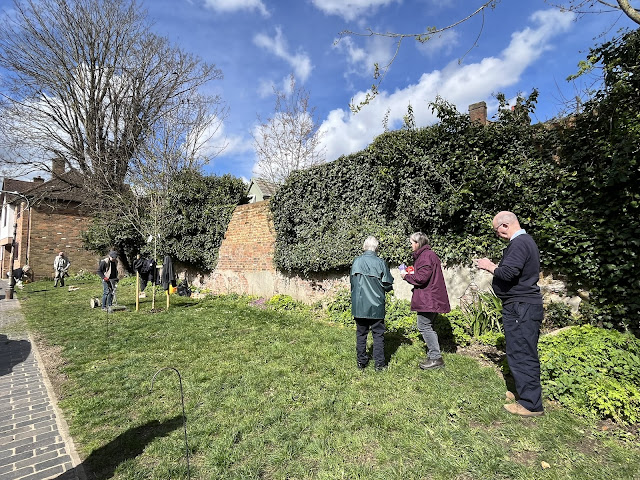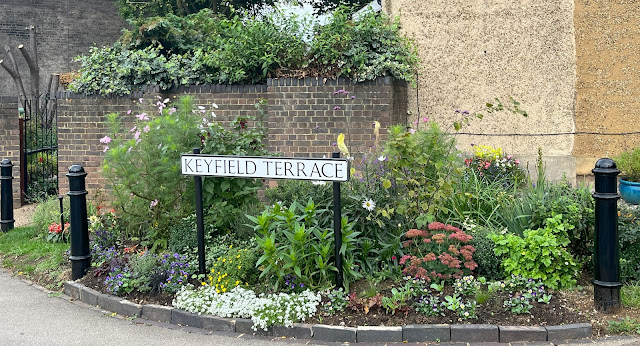Green Oasis Journal No. 6
The Green Oasis volunteer team shifted the focus from clearing activities to building activities in the summer. In the Oasis, you can now see a couple new features lovingly installed by the team. With these additions, the Oasis feels even more closely integrated with the local community.
It is also worth noting the bright summer display at the Keyfield Terrace, previously mentioned in Journal No. 3. It is now full of fabulous summer blooms. The work is done by local guerrilla gardeners who we know live on Sopwell Lane. The photos of their skilled work are at the end of this post.
Sopwell Bug Hotel
The volunteers, Cathy and Roger, constructed a luxurious hotel for bugs to provide a safe and resting place for travelling bugs. It is positioned next to the wildlife pond - hoping to encourage more local wildlife and biodiversity. It is lovingly named 'Sopwell Bug Hotel' and it's open for business!
Water Butt
The volunteer group obtained some fund from the SAPHRA to purchase a water butt. It is now installed at the pond end of the Green Oasis - it will help when dry spell hits and when the plants are need watering. Local residents are encouraged to pour water into the water butt as and when they can.
Memorial for Phil
One of the key Green Oasis volunteers, Phil Fletcher, sadly passed away earlier this year (noted previously in Journal No. 4). The volunteer group have planted a weigela plant* in the hollowed-out tree stump on the site and erected a memorial plate in Phil's name. The plate is purchased by donations of local residents and the resident association.* Weigela plant (as described by RHS): Flowering in late spring to early summer, weigelas are easy-to-grow deciduous shrubs that combine with evergreen shrubs to provide a backdrop to later-flowering plants. Their trumpet-like flowers mostly in whites, pinks, reds and purples but also yellow are popular with the bees.
Plants and Blooms



.JPEG)
Blue poppy anemone, spotted dead-nettles, honeysuckle (at the back), and globe thistle (back left hand side):
.JPEG)







.JPEG)




Comments
Post a Comment